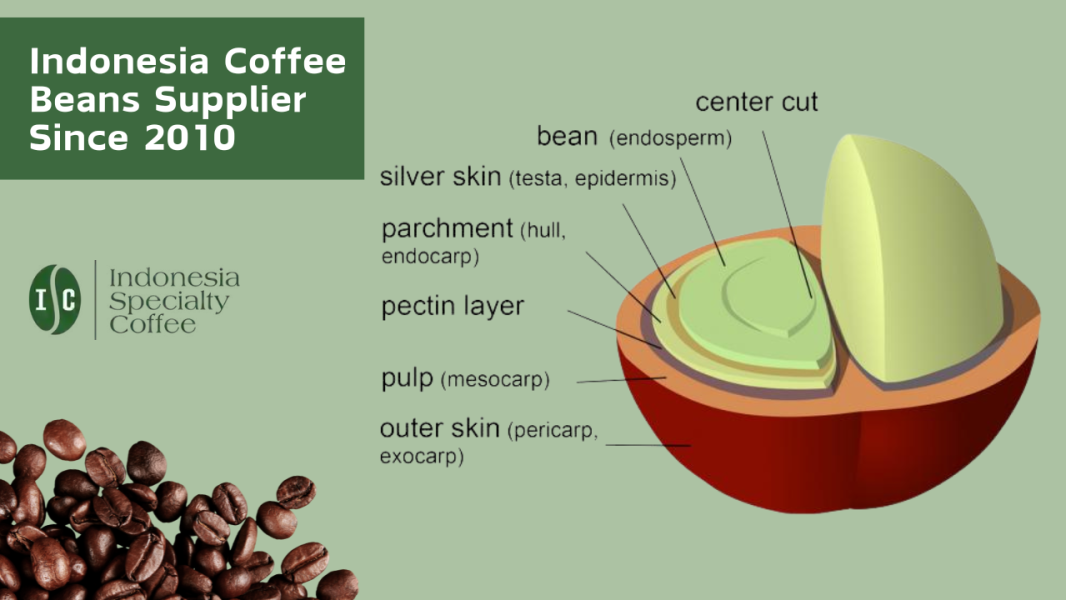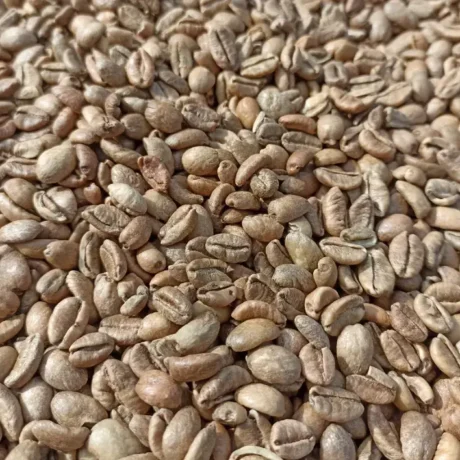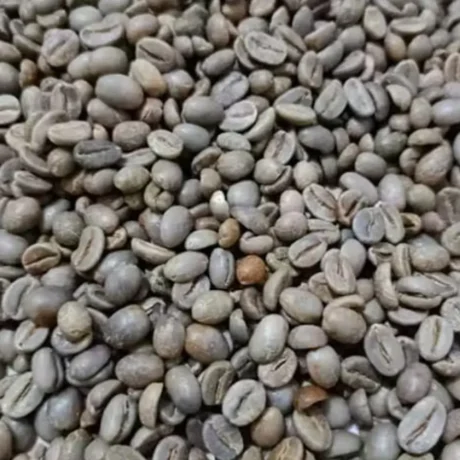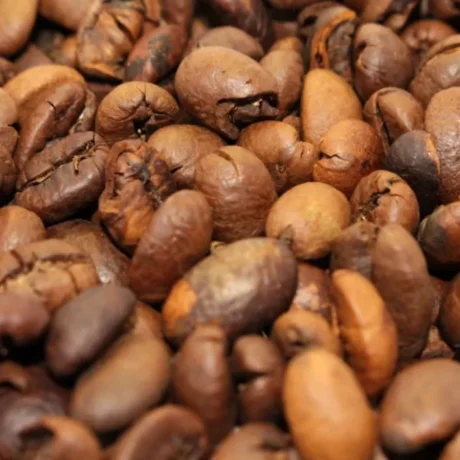Coffee is a globally cherished beverage, renowned for its rich flavor and stimulating effects. Central to coffee’s appeal are the coffee beans, the seeds of the Coffea plant. The chemical composition of these beans is vital to their flavor, aroma, and health benefits.
Coffee beans contain various compounds, including caffeine, chlorogenic acids, lipids, carbohydrates, and proteins. These elements define coffee’s sensory qualities and physiological effects. This article explores the key chemical components of coffee beans and their significance, providing a concise understanding of what makes coffee special.
Table of Contents
The History
The origins of coffee can be traced back to an ancient Ethiopian tale from around the 9th century. It’s said that a herder named Kaldi discovered the energizing properties of coffee after observing his goats becoming lively upon eating berries from a certain bush. This led to the realization of the berries’ stimulating effects. (History of coffee – Wikipedia)
The practice of cultivating and trading coffee started in the Arabian Peninsula. The first coffee houses, which became social gathering places, originated there. By the 1400s, coffee reached Mecca, and by the 1500s, it had spread to the rest of the Middle East, Persia, Turkey, and northern Africa. Eventually, coffee made its way to Italy, from where it spread throughout Europe, with coffee houses becoming hubs for intellectual discussion in many major European cities. (History of coffee | Origin, Facts, & Timeline | Britannica)
While the precise date when coffee beans were first discovered is unknown, Kaldi’s story is among the most enduring legends regarding the beginnings of coffee.
Overview of Coffee Beans
Coffee beans are the seeds found inside the fruit of the Coffea plant, commonly referred to as coffee cherries. The two main species cultivated for coffee production are Coffea arabica (Arabica) and Coffea canephora (Robusta).
Arabica vs. Robusta Coffee Beans
– Arabica Beans: Known for their smooth, complex flavor and lower caffeine content. They grow at higher altitudes and are more susceptible to pests and diseases.
– Robusta Beans: Characterized by a stronger, more bitter flavor and higher caffeine content. They are hardier plants, capable of growing at lower altitudes and in harsher conditions.
Coffee Bean Structure
A coffee bean is composed of several layers:
- Outer Skin (Exocarp): The tough outer layer of the coffee cherry.
- Pulp (Mesocarp): The fleshy part surrounding the bean.
- Parchment Layer (Endocarp): A protective layer around the bean.
- Silver Skin (Perisperm): A thin layer that clings to the bean after the parchment is removed.
- The Bean: The seed itself, consisting of two cotyledons.
Understanding the basic structure and types of coffee beans is essential for appreciating their chemical composition and the factors influencing their quality.
Major Chemical Compounds on Coffee Beans
The unique qualities of coffee beans arise from their complex chemical composition. Here are the primary compounds found in coffee beans:
Caffeine
- Role: Provides coffee’s stimulating effects and contributes to its bitter taste.
- Concentration: Arabica beans contain about 1.2% caffeine, while Robusta beans have around 2.2%.
Chlorogenic Acids
- Role: Contribute to coffee’s acidity and antioxidant properties.
- Impact: Affects flavor and can influence the health benefits of coffee.
Lipids
- Types: Mainly composed of triglycerides, diterpenes (cafestol and kahweol), and unsaturated fatty acids.
- Role: Influence the mouthfeel and aroma of coffee.
Carbohydrates
- Types: Include sugars (sucrose) and polysaccharides (cellulose, arabinogalactans).
- Role: Participate in the Maillard reaction during roasting, contributing to flavor and color.
Proteins and Amino Acids
- Role: React during roasting to form volatile aroma compounds through the Maillard reaction.
- Contribution: Enhance flavor complexity and nutritional value.
These compounds collectively shape the sensory profile of coffee and play a role in its potential health effects.
Volatile Coffee Beans Compounds
Volatile compounds are essential in defining coffee’s aroma and flavor profile. These compounds are released during roasting and significantly contribute to the sensory experience of drinking coffee.
Aromatics
- Key Compounds: Furans, pyrazines, aldehydes, ketones, and phenols.
- Role: These compounds are primarily responsible for the pleasant and complex aromas in coffee. They give rise to notes such as fruity, floral, nutty, and smoky.
Acids
- Types: Organic acids like citric, malic, acetic, and quinic acids.
- Impact: These acids contribute to the acidity and brightness of coffee, balancing its flavor profile. They can add sharpness and complexity, enhancing the overall taste.
Volatile compounds are produced in significant amounts during the roasting process, where heat-induced reactions lead to the formation of hundreds of aroma compounds. The specific combination and concentration of these volatiles determine the distinctive aroma and flavor of each coffee type.
Non-Volatile Coffee Beans Compounds
Non-volatile compounds in coffee beans contribute to the taste, mouthfeel, and health benefits of coffee. These compounds remain stable during brewing and significantly impact the final cup.
Minerals
- Key Minerals: Potassium, magnesium, calcium, and phosphorus.
- Role: Essential for various biochemical processes. They can influence the water chemistry during brewing, affecting extraction and flavor.
Melanoidins
- Formation: Created during the Maillard reaction in roasting.
- Impact: Contribute to the color, body, and potential antioxidant properties of coffee. They add depth to the flavor and are responsible for the dark color of roasted coffee.
Trigonelline
- Role: Precursor to niacin (vitamin B3) and contributes to the bitterness of coffee.
- Impact: Undergoes degradation during roasting, forming compounds that enhance coffee’s aroma and flavor.
Non-volatile compounds ensure that coffee retains its characteristic taste and mouthfeel while offering potential health benefits, making them crucial components of the coffee bean’s overall composition.
Impact of Processing on Coffee Beans Chemical Composition
The journey from coffee cherry to roasted bean involves several processing stages, each of which affects the chemical composition of the coffee beans in unique ways.
Fermentation
- Changes: Enzymatic reactions break down sugars, altering the sugar and acid content.
- Development: Fermentation can lead to the formation of flavor precursors, influencing the final taste profile of the coffee.
Drying and Milling
- Effects: Drying reduces moisture content, affecting the concentration of volatile compounds. Milling removes the parchment layer, exposing the bean for roasting.
- Influence: Proper drying and milling ensure uniformity and quality in the final product, preserving desirable chemical compounds.
Roasting
- Chemical Transformations: Heat-induced reactions, such as the Maillard reaction and caramelization, transform the chemical composition of the beans.
- New Compounds: Roasting generates new aroma and flavor compounds while altering the concentration of existing ones, leading to the characteristic flavor profiles of different coffee types.
Understanding the impact of processing methods is essential for coffee producers and enthusiasts alike, as it directly influences the sensory attributes and quality of the final brewed coffee.
Influence of Environmental Factors on Coffee Beans
Environmental conditions, including cultivation practices and geographic location, play a significant role in shaping the chemical composition of coffee beans.
Cultivation Conditions
- Soil Composition: Determines the availability of nutrients and minerals absorbed by the coffee plant.
- Altitude: Higher altitudes often produce beans with more complex flavors due to slower maturation and increased acidity.
- Climate: Temperature, rainfall, and sunlight exposure influence the rate of photosynthesis and metabolite production in coffee plants.
Genetic Factors
- Varietal Differences: Arabica and Robusta beans have distinct chemical profiles due to genetic differences.
- Hybridization: Crossbreeding and genetic modification techniques can introduce new traits and alter chemical composition.
- Selection: Breeding programs focus on developing coffee varieties with desirable flavor profiles and resistance to pests and diseases.
By understanding the impact of environmental factors and genetic variability, coffee producers can optimize cultivation practices to enhance the quality and consistency of their coffee beans.
Coffee Beans Health Implications
The chemical composition of coffee beans not only influences flavor but also contributes to potential health effects, both positive and negative.
Beneficial Compounds
- Antioxidants: Chlorogenic acids and melanoidins exhibit antioxidant properties, which may help protect cells from damage caused by free radicals.
- Nutrients: Coffee beans contain essential minerals like magnesium and potassium, as well as vitamins and phytochemicals that contribute to overall health.
Potential Risks
- Caffeine Dependency: Excessive consumption of caffeine can lead to dependence, withdrawal symptoms, and negative health effects in sensitive individuals.
- Acrylamide Formation: During roasting, the chemical acrylamide, a potential carcinogen, can form in small amounts.
Moderation and Balance
- Key: Enjoying coffee in moderation can provide health benefits while minimizing potential risks.
- Individual Variability: Sensitivity to caffeine and other compounds varies among individuals, so it’s essential to listen to your body and adjust consumption accordingly.
By understanding the balance between the beneficial and potentially harmful compounds in coffee, individuals can make informed choices to incorporate coffee into a balanced and healthy lifestyle.
The chemical composition of coffee beans is a fascinating subject that underpins the complex flavors, aromas, and potential health effects of this beloved beverage. From caffeine and chlorogenic acids to lipids and volatile compounds, each component contributes to the rich sensory experience of coffee.
Throughout its journey from cultivation to brewing, coffee beans undergo various processes that shape their chemical profile. Environmental factors, processing methods, and genetic variability all play significant roles in determining the final flavor and quality of the coffee.
As we continue to explore the science of coffee beans, it becomes evident that coffee is more than just a beverage—it’s a complex matrix of compounds that offers both enjoyment and potential health benefits. By understanding the intricacies of coffee’s chemical composition, we can better appreciate its cultural significance and make informed choices about consumption.
Get your stock for Coffee Beans from us.
Send us email anytime at info@specialtycoffee.id and WhatsApp +62 811 6380 606





